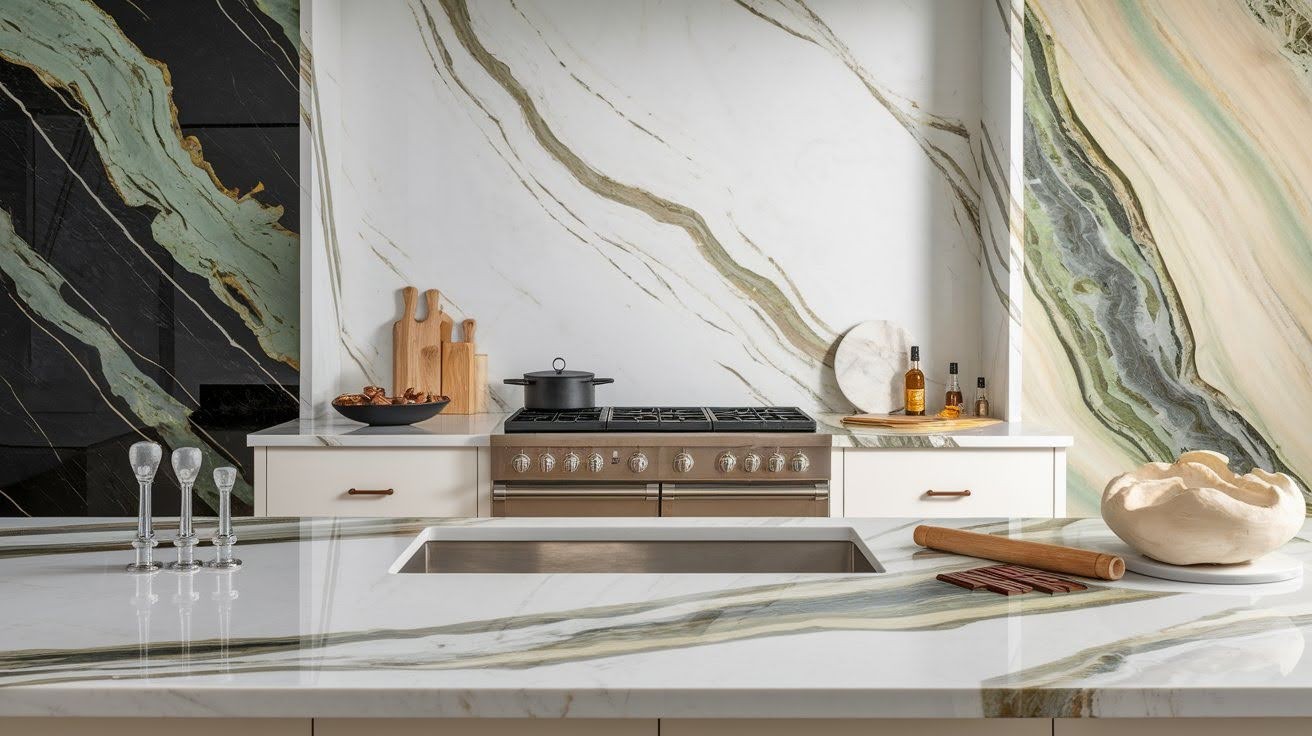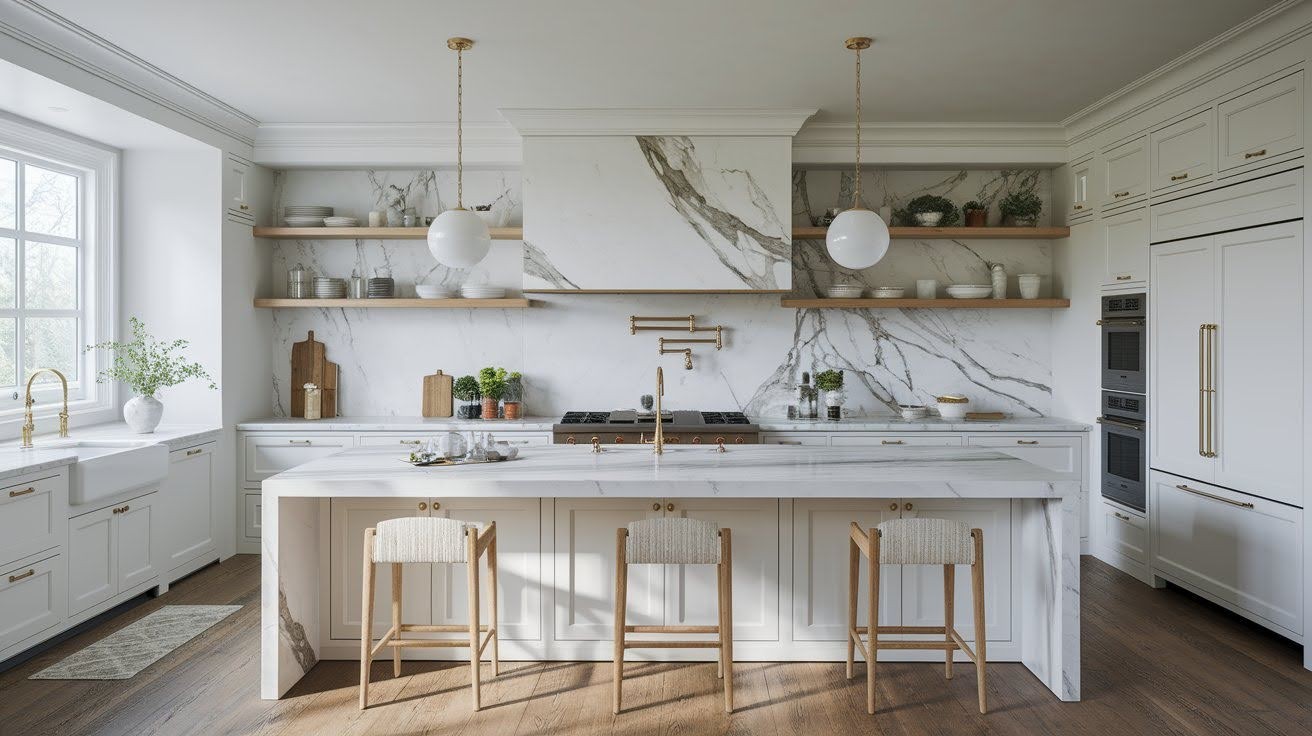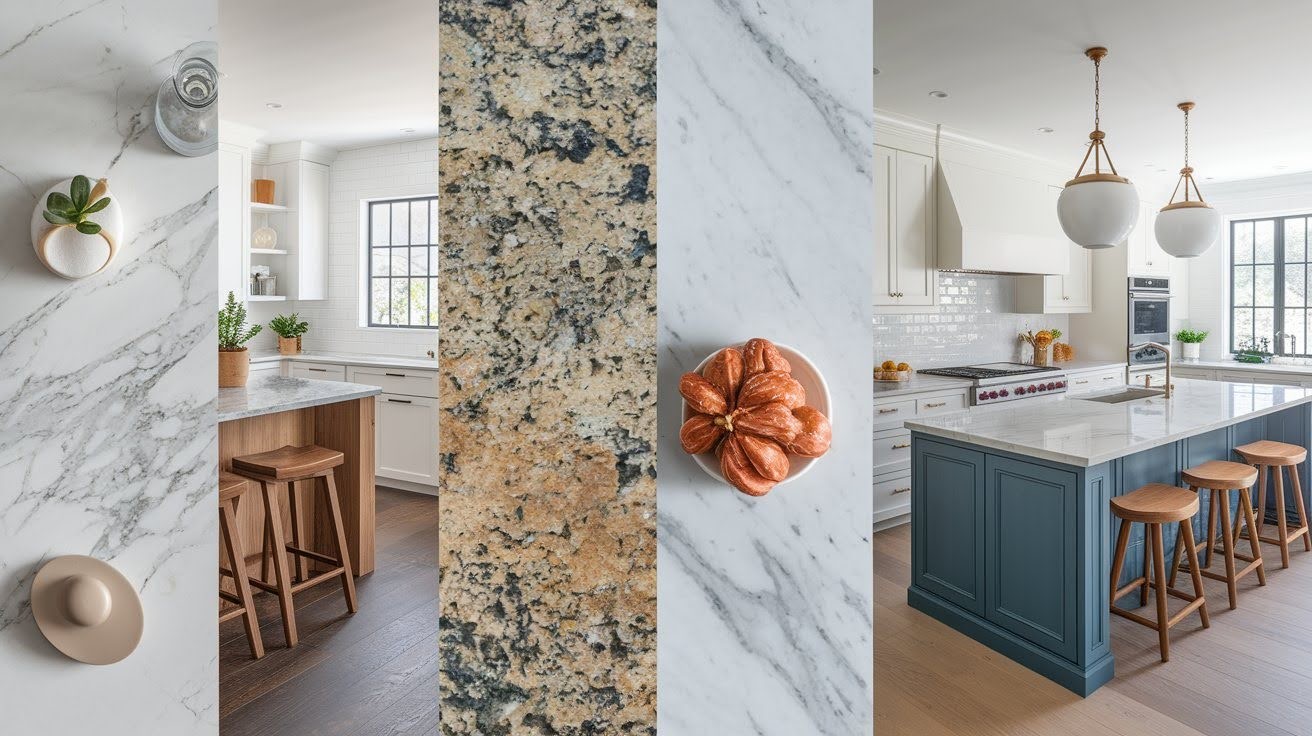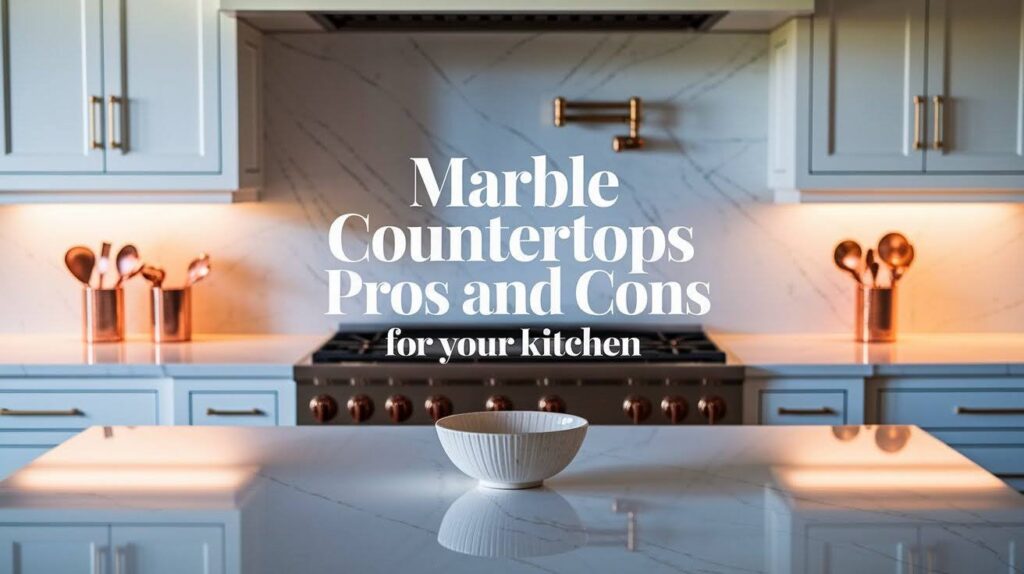Marble countertops are beautiful in kitchens, but they’re not for everyone. After helping dozens of homeowners weigh the pros and cons of marble countertops.
I believe the decision really starts with your kitchen use and lifestyle. This look has special maintenance needs.
I will find all the benefits and drawbacks of marble in this full guide, and I will compare it to other choices like quartz and granite.
I will also get into the details of marble maintenance, cost, and daily life. Let’s take a look at this classic stone.
Pros of Marble Countertops

Marble offers distinct advantages that make it a sought-after choice for kitchens that prioritize style and function.
Timeless Beauty and Luxury
Marble delivers a high-end appearance with unique veining patterns that no two slabs share. Colors range from classic white Carrara to dramatic black, with grays, greens, and beiges in between.
Increases Home Value
Real stone countertops boost resale value significantly compared to laminate or tile options. Marble is considered a status symbol that signals luxury and quality to potential buyers.
Ideal for Baking and Cooking
The naturally cool surface stays perfect for rolling dough, making pastry, and working with chocolate. Marble resists moderate heat reasonably well, making it useful for various baking tasks.
Variety of Finishes
Polished marble features a shiny, reflective surface that shows off colors and veining dramatically. Honed marble offers a matte surface that hides scratches and etching better.
Long Lifespan
Marble can last decades with proper care and attention to maintenance schedules. Ancient marble structures prove the material’s longevity potential when treated appropriately.
Sustainable Option
Marble is natural, recyclable, and long-lasting compared to synthetic alternatives. The stone doesn’t off-gas chemicals, making it environmentally friendlier than many man-made materials.
Cons of Marble Countertops

Understanding marble’s limitations helps you decide if the beauty justifies the ongoing care and investment required.
High Cost
Marble typically ranges from $100 to $200 per square foot, depending on type, quality, and source. Carrara marble may be more affordable, but premium varieties like Calacatta or Statuario command top prices.
Prone to Stains
The porous material absorbs liquids and pigments easily, leading to permanent discoloration if spills aren’t cleaned immediately. Coffee, wine, and oils are particularly problematic for all marble colors.
Requires Regular Maintenance
Marble needs sealing every six months to maintain stain resistance. Cleaning requires non-acidic, gentle products specifically formulated for natural stone, as common household cleaners can etch the surface.
Susceptible to Scratches
Marble is softer than granite or quartz, making it more vulnerable to surface damage. Metal utensils, keys, and heavy objects can leave visible marks that require extra caution.
Develops Patina Over Time
The surface changes naturally with age, often darkening or showing etching from acidic exposure. Some homeowners find this charming, while others view it as deterioration.
Heavy and Requires Professional Installation
Marble slabs are extremely heavy and need proper structural support underneath. DIY installation is not recommended due to specialized tools, techniques, and risk of expensive damage.
Alternatives to Marble

Several materials offer marble’s look with fewer drawbacks, making them practical choices for busy kitchens.
Quartz
Provides low maintenance with engineered patterns that mimic marble’s veining convincingly. The non-porous surface resists stains without sealing and handles daily use more forgivingly than real marble.
Granite
Offers greater durability and stain resistance while maintaining natural stone appeal. Though it requires annual sealing, granite is less porous and more scratch-resistant than marble.
Soapstone and Laminates
Serve as budget-friendly options for homeowners wanting stone aesthetics without premium costs. Modern laminates replicate marble patterns surprisingly well at a fraction of the price.
Maintenance Tips for Marble Countertops
- Clean daily with warm water and mild dish soap, then dry thoroughly to prevent water spots and mineral buildup
- Apply recommended sealants every six months or according to manufacturer guidelines to maintain stain resistance
- Wipe spills immediately, especially acidic substances like lemon juice, wine, tomato sauce, and vinegar that etch marble
- Always use cutting boards to prevent scratches from knives and avoid dragging heavy pots across the surface
- Place trivets or hot pads under warm cookware to prevent thermal shock, though marble handles heat better than some materials
Conclusion
Marble countertops have good and bad points. Even decades after installation, a well-maintained marble kitchen can look beautiful.
Others can look well-worn in just a few years. What makes the difference? A homeowner shows willingness. They also devote time to maintenance.
Are you honest with yourself about your cleaning habits? Are you honest about your cooking habits? Do you clean up spills? If resealing every six months is feasible, marble may be a great choice.
Not sure? Visit showrooms and see the marble in person and touch different finishes. Then let me know where you’re most concerned in the comments, and I’ll help you.
Frequently Asked Questions
Is marble good for kitchen countertops?
Marble works well for homeowners who prioritize beauty and don’t mind regular maintenance. It’s ideal for bakers but requires immediate spill cleanup to prevent stains.
How often does marble need sealing?
Marble needs sealing every six months for optimal protection. High-use areas may require more frequent sealing than low-traffic spots.
Does marble stain easily?
Yes, marble’s porous nature makes it prone to staining from wine, coffee, and oils. All colors require vigilant spill cleanup.
Is marble more expensive than quartz?
Marble and quartz cost similarly at $100-$200 per square foot installed. However, marble requires ongoing maintenance costs for sealants.
Can you cut directly on marble countertops?
No, cutting directly on marble will scratch the surface. Always use cutting boards to protect the stone long-term.

